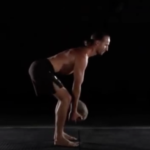Part 1: Avoiding Injury

I see a lot of injuries in my office. In some cases, people can point to a specific cause–a fall, an accident, running into someone. Other patients tell me confusedly, “I have no idea how this happened.” In both cases, there’s usually a few pieces of their history that lie at the root cause of the injury. Addressing these factors sooner rather than later can change a patient’s risk for injury.
1. Abnormal biomechanics.
AKA Something doesn’t move the way it should.
I look at biomechanics all day long. Normal biomechanics means:
- The muscles around a joint are balanced and pulling proportionately on the bones.
- The joints move well through their full range of motion.
- There is stability and mobility in the appropriate places in the body. This means that when moving, the rest of the body provides stabilization for the moving parts. The movers aren’t limited by a lack of stabilization. It also means the stabilizers don’t have to compensate for lack of range of motion elsewhere.1

An example of this is bending over to pick something up. The hips and knees bend when the patient reaches down to pick something up, and the abdominals stabilize the spine. The spine doesn’t move a whole lot because the hips and knees should. Not being able to do that may be a result of problems with the knees, the hips, the core, the back, or the feet.2
Lack of pain doesn’t automatically mean you have great function. Abnormal biomechanics may require professional assessment to evaluate and correct. That said, being aware of what you feel as you move brings dysfunctional movements to your attention, which is a good start.
Abnormal biomechanics can also come from previous injury. If the movement patterns changed and were never corrected, if certain muscles are inhibited as compensation, or if there was tissue damage that didn’t fully heal, the body is going to make up for that in the way it moves. That changes the stresses on the muscles and bones and can result in wear and tear that the body doesn’t usually have to deal with. So a past injury can make you more susceptible to future injury.3
2. Lack of conditioning.
Your body responds really well to the forces placed on it. It also responds to the lack of forces placed on it.4 If you want to get back into shape (hello spring), know your body and your ability. If you have weak muscles and tendons and ligaments that haven’t had to do much, you’re at higher risk for injury.1 Solution? Do something, but don’t try to do everything all at once. Just because you used to be able to do it doesn’t mean you still can, especially if it’s been months or years since you last did it.
Muscle activation patterns change in response to activity.5 If you want to be fit, work on sustainability over time and increase load slowly. Planning a vacation with an 8 mile hike? Wanting to see as much of New York City as you can in a day? Start walking a mile today (15 minutes). Do it a couple times over a week or two before you go up another mile. Running the Indy Mini? Don’t rush that training and don’t push too hard too fast because fatigue makes form go downhill fast. Being tired and losing form results in bad biomechanics that increase stress on your muscles, ligaments, and bones.
Lack of aerobic base before increasing high intensity training volume can also land you right back at injury. If you don’t know where to start, I recommend looking at the tried and true Maffetone method. It takes some self control but is awesome when it comes to exercising for health and staying injury free.
3. Chronic stress.
Stress has many forms—emotional stress, chemical stress (including having to process too much caffeine or sugar), lack of good sleep, lack of movement. These all tax the body and can result in increased cortisol.6,7 That leads to less ability for the body to respond and heal when you ask it to do something. Chronic inflammation can also prevent healing of the tissues in the body.
So here’s a checklist: Are you moving well, eating well, sleeping well, getting sunlight, managing your stress, and maintaining good relationships? It’s hard to do everything all at once, but you can absolutely improve all these over time. Improving these will directly impact your body’s ability to heal itself.
In Short…
Wear and tear happens, but your body has repair mechanisms to fix that wear and tear. Injury happens when you have abnormal wear and tear (crappy biomechanics), your tissues aren’t used to stress put on them (lack of conditioning), or your ability to heal is decreased (chronic stress).
I have thirty year olds tell me that they feel like they’re getting old, which to me indicates there’s at least two of the three factors at play. One of these factors may not result in an injury, but throw two or even all three into the mix? You’re starting to ask for a long term nagging injury that won’t quiet down on its own. Healing an injury takes more than rest, one special rehab exercise, and anti-inflammatory drugs. It takes quality movement involving the whole body and a body that isn’t so stressed out it can’t handle tissue healing.
Part 2 of this article delves further into the role of chronic stress on the musculoskeletal system.
For questions, comment below or get in touch with us. For the article sources, click here.
Leave a Reply
You must be logged in to post a comment.